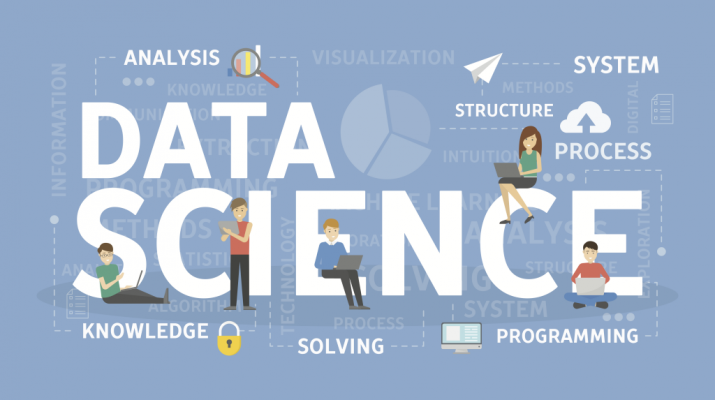In this complete -Data Science Course-, you will learn each and everything you need to know in order to be a data scientist. This course is beginner-friendly.
You will know about what data science is and how to do data science and what is required to do data science practically and also learn about Data Science, Data Sourcing, Basic coding, mathematics and statistics as well.
Table of Contents:
Part 1: Data Science: An Introduction: Foundations of Data Science
Welcome – Data Science: An Introduction – 1.1
Demand for Data Science – Data Science: An Introduction – 2.1
The Data Science Venn Diagram – Data Science: An Introduction – 2.2
The Data Science Pathway – Data Science: An Introduction – 2.3
Roles in Data Science – Data Science: An Introduction – 2.4
Teams in Data Science – Data Science: An Introduction – 2.5
Big Data – Data Science: An Introduction – 3.1
Coding – Data Science: An Introduction – 3.2
Statistics – Data Science: An Introduction – 3.3
Business Intelligence – Data Science: An Introduction – 3.4
Do No Harm – Data Science: An Introduction – 4.1
Methods Overview – Data Science: An Introduction – 5.1
Sourcing Overview – Data Science: An Introduction – 5.2
Coding Overview – Data Science: An Introduction – 5.3
Math Overview – Data Science: An Introduction – 5.4
Statistics Overview – Data Science: An Introduction – 5.5
Machine Learning Overview – Data Science: An Introduction – 5.6
Interpretability – Data Science: An Introduction – 6.1 (1:4:00)
Actionable Insights – Data Science: An Introduction – 6.2
Presentation Graphics – Data Science: An Introduction – 6.3
Reproducible Research – Data Science: An Introduction – 6.4
Next Steps – Data Science: An Introduction – 7.1 (1:36:00)
Part 2: Data Sourcing: Foundations of Data Science ( 1:44:00)
Welcome – Data Sourcing – 1.1
Metrics – Data Sourcing – 2.1
Accuracy – Data Sourcing – 2.2
Social Context of Measurement – Data Sourcing – 2.3
Existing Data – Data Sourcing – 3.1
APIs – Data Sourcing – 3.2
Scraping – Data Sourcing – 3.3
New Data – Data Sourcing – 4.1
Interviews – Data Sourcing – 4.2
Surveys – Data Sourcing – 4.3
Card Sorting – Data Sourcing – 4.4
Lab Experiments – Data Sourcing – 4.5
A/B Testing – Data Sourcing – 4.6
Next Steps – Data Sourcing – 5.1
Part 3: Coding ( 2:36:00)
Welcome – Coding – 1.1
Spreadsheets – Coding – 2.1
Tableau Public – Coding – 2.2
SPSS – Coding – 2.3
JASP – Coding – 2.4
Other Software – Coding – 2.5
HTML – Coding – 3.1
XML – Coding – 3.2
JSON – Coding – 3.3
R – Coding – 4.1
Python – Coding – 4.2
SQL – Coding – 4.3
C, C++, & Java – Coding – 4.4
Bash – Coding – 4.5
Regex – Coding – 5.1
Next Steps – Coding – 6.1
Part 4: Mathematics (4:05:00)
Welcome – Mathematics – 1.1
Elementary Algebra – Mathematics – 2.1
Linear Algebra – Mathematics – 2.2
Systems of Linear Equations – Mathematics – 2.3
Calculus – Mathematics – 2.4
Calculus & Optimization – Mathematics – 2.5
Big O – Mathematics – 3.1
Probability – Mathematics – 3.2
Bayes’ Theorem – Mathematics – 3.3
Next Steps – Mathematics – 4.1
Part 5: Statistics (5:00:00)
Welcome – Statistics – 1.1
Exploration Overview – Statistics – 2.1
Exploratory Graphics – Statistics – 2.2
Exploratory Statistics – Statistics – 2.3
Descriptive Statistics – Statistics – 2.4
Inferential Statistics – Statistics – 3.1
Hypothesis Testing – Statistics – 3.2
Estimation – Statistics – 3.3
Estimators – Statistics – 4.1
Measures of Fit – Statistics – 4.2
Feature Selection – Statistics – 4.3
Problems in Modeling – Statistics – 4.4
Model Validation – Statistics – 4.5
DIY – Statistics – 4.6
Next Step – Statistics – 5.1
Source: https://datasciencedata.com/

